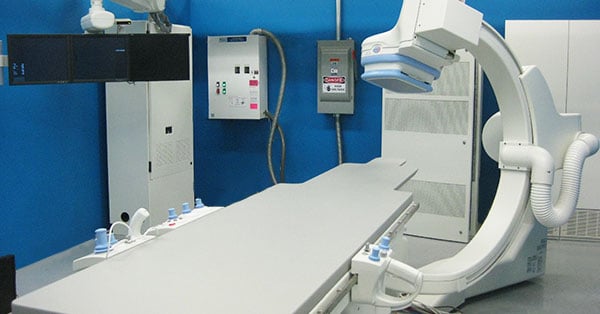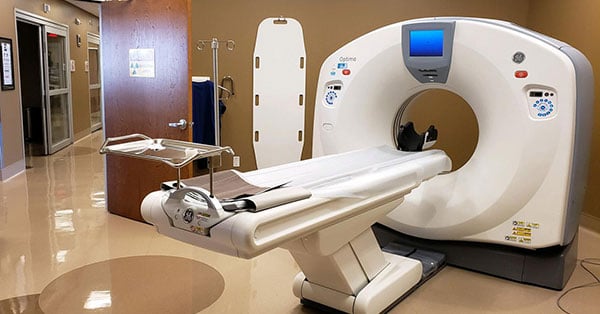
While modalities like CT and MRI are well known by most, there are some systems that fly a bit more under the radar. One of these modalities is the cath lab. We often receive questions regarding exactly what a cath lab is - so let's talk about it!
What exactly is a cath lab?
A cath lab is an examination room with diagnostic imaging equipment where doctors perform minimally invasive procedures to diagnose and treat a wide range of cardiovascular issues.
In the cath lab, doctor's use fluoroscopy to see catheters move through vessels and arteries, and from there can deploy a variety of methods to diagnose and treat various diseases.
One thing that stands a cath lab apart from other modalities is the image to diagnosis to treatment timeline. Modalities such as MRI, CT, Rad Rooms, etc. are diagnostics that provide data to enable treatments. In a cath lab, they are diagnosing and treating, often in the same study.
You'll find cath labs in facilities like Hospitals, Imaging Centers, Office Based Labs, and Ambulatory Surgery Centers.
What procedures can a cath lab perform?
A variety of procedures can be performed in a cath lab. Some of the most common are listed below:
Ablation – Treatment for atrial fibrillation using heat or cold to create tiny amounts of scar tissue in the heart in the electrical location causing irregular heartbeats
Angiogram – Using fluoroscopy and contrast dye to view blood flow through veins, arteries, or the heart
Angioplasty and Stenting – Procedure for the widening of narrowed or obstructed veins or arteries
Coiling – Insertion of small metal coils into an aneurysm to stop blood flow into the aneurysm to reduce the risk of a bleed
Electrophysiology (EP studies) – A study to assess the electrical system of the heart, searching for abnormalities or arrhythmias (See Ablation above)
Heart Valve Replacement – Replacement of faulty heart valves with a mechanical valve
Pacemakers – Implanting of a pacemaker into the patients chest to help maintain regular heartbeats
Radioembolization – Oncology treatment where tiny glass or resin beads filled with a radioisotope are placed directly into the blood vessel that is feeding a tumor
Thrombectomy - Removal of blood clots from a blood vessel
Not all cath labs are created equal
While most labs are single plane systems, the more specialized areas utilize biplane cath labs. These provide images on both the X and Y axes and are more suitable for those studies requiring 3D reconstruction of images. Learn more about single plane vs. biplane systems.
Depending on the studies being performed, there are a whole host of additional equipment that could be in the room. Items like GE MacLab Patient Monitors, IVUS ultrasound, balloon pumps, thrombectomy pumps, anesthesia equipment, and more could be in the room, ready for use as needed.
So there you have it! Cath Labs are fundamental in doctor's diagnosing and treating a wide range of cardiovascular issues. Interested in equipping your facility with a refurbished cath lab? Click here for a cath lab price guide or contact us today!

Kenn Dextrom
Kenn Dextrom is the Director of Product Manager at Block Imaging. He aims to provide clear direction and careful planning for Interventional Cath Lab buyers and working with the Block Imaging product team to provide excellent solutions for our customers. Out of the office, he spends most of his time keeping up with his wife and their three energetic sons.





